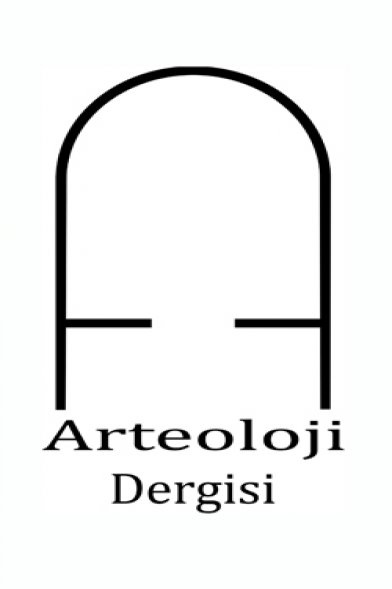ALTINOVA’DAN KURA ARAS KÜLTÜRÜNE AİT ÜNİK BİR ESER: PİŞMİŞ TOPRAK PLAKA
Yukarı Fırat Havzası, Altınova, Elazığ Müzesi, Kura Aras Kültürü, Pişmiş Toprak Plaka
A UNIQUE ARTIFACT OF KURA ARAXES CULTURE FROM THE ALTINOVA: A TERRACOTTA PLAQUE
Upper Euphrates Basin, Altinova, Elazig Museum, Kura Aras Culture, Terracotta Plaque,
___
Badalyan, R., Smith, A.T., Lindsay, I., Harutyunyan, A., Greene, A., Marshall, M., Monahan, B., Hovsepyan, R. (2014). A prelminary report on the 2008, 2010, and 2011 investigations of Project ArAGATS on the Tsaghkahovit Plain, Republic of Armenia. Arcäologische Mitteilungen aus Iran and Turan, (46), 149-222.
Coşkun, N. (2018). Keban Projesi: Ağın Hoşrik mevki ve Kalecikler kurtarma kazılarına yeni bir bakış. Anadolu Araştırmaları, (21), 124-153.
Duru, R. (1979). Keban Projesi Değirmentepe kazısı 1973. Orta Doğu Teknik Üniversitesi, Keban Projesi Yayınları, Seri III, No. 2.
---------- (2000). Elazığ - Değirmentepe kazısı. İçinde Oktay Belli (Ed.). Türkiye Arkeolojisi ve İstanbul Üniversitesi (1932-1999). (ss.130-132.). İstanbul Üniversitesi Rektörlüğü Yayın No: 4242.
Ertem, H. (1972). Han İbrahim Şah kazısı, 1970. İçinde Sevim Pekman (Ed.). Keban Projesi 1970 Çalışmaları. (ss.63-68). Ortadoğu Teknik Üniversitesi, Keban Projesi Yayınları, Seri, I. No. 3.
Esin, U. (1970). Tepecik Kazısı 1968 yılı ön raporu. İrem Acaroğlu (Ed.). 1968 yaz çalışmaları. (ss.147-158). Ortadoğu Teknik Üniversitesi, Keban Projesi Yayınları, Seri: 1, Yayın: 1.
---------- (1982). Tepecik Kazısı, 1974. İçinde Sevim Pekman (Ed.). Keban Projeleri 1974-75 Çalışmaları. (ss.71-93). Ortadoğu Teknik Üniversitesi, Keban Projesi Yayınları, Seri 1., No. 7.
---------- (2000). Tepecik Kurtarma Kazıları, İçinde Oktay Belli (Ed.). Türkiye Arkeolojisi ve İstanbul Üniversitesi (1932-1999). (ss.123-129). İstanbul Üniversitesi Rektörlüğü Yayın No: 4242.
Frangipane, M. (2014). After collapse: Continuity and disruption in the settlement by Kura-Araxes-linked pastoral groups at Arslantepe-Malatya (Turkey). New Data. Paléorient, 40(2), 169-182.
Glonti L., Ketskhoveli M., Palumbi G., (2008). The Cemetery at Kvatskhelebi. In Antonio Sagona, Mikheil Abramishvili (Eds.). Archaeology in Southern Caucasus: Perspectives from Georgia. Ancient Near Eastern Studies, 19, Peeters Press.
Hauptmann, H. (1982). Norşuntepe Kazıları, 1974. İçinde Sevim Pekman (Ed.), Keban Projeleri 1974-75 Çalışmaları. (ss. 41-70). Ortadoğu Teknik Üniversitesi, Keban Projesi Yayınları, Seri 1. No. 7.
---------- (2000). Zur Chronologie des 3. Jahrtausends v. Chr. am oberen Euphrat Aufgrund der Stratigraphie des Norşuntepe. In Marro, C., Hauptmann, H., (Eds.). Chronologies des Pays du Caucase et de l’Euphrate aux IVe-IIIe Millenaries. (pp.419-438). Institut Francais d’Etudes Anatoliennes d’Istanbul De Boccard.
Işıklı, M. (2011). Doğu Anadolu Erken Transkafkasya kültürü çok bileşenli bir kültürün analizi. Arkeoloji ve Sanat Yayınları.
Kelly-Buccelati, M. (1978). The Early Bronze Age pottery. Descriptive and comparative analysis. In van Loon M.N (Ed.) Korucutepe 2, final report on the excavations of the universities of Chicago, California (Los Angeles) and Amsterdam in the Keban Reservoir, Eastern Anatolia (1968–1970). (pp.67-88). North-Holland Publishing Company, 1978.
Koşay, H. Z. (1976). Keban projesi Pulur kazısı 1968-1970. Orta Doğu Teknik Üniversitesi, Keban Projesi Yayınları. Seri III, No. I.
van Loon, M. N. (1978). Architecture and stratigraphy, In van Loon M.N (Ed.) Korucutepe 2, final report on the excavations of the universities of Chicago, California (Los Angeles) and Amsterdam in the Keban Reservoir, Eastern Anatolia (1968–1970). (pp.3-45). North-Holland Publishing Company.
Marro, C. (2011). Eastern Anatolia in the Early Bronze Age. In G. McMahon, S. Steadman (Eds.). The Oxford Handbook of Ancient Anatolia: (10.000-323 BCE), 290-307.
Özdoğan, M. (2021). Fırat’la doğan, barajlarla yok olan, kurtarma kazılarıyla (geri kazanılan) kültür: Fırat 1964-2004 / 40 yılın öyküsü. Arkeoloji ve Sanat Yayınları.
Palumbi, G., Chataigner, C. (2014). Introduction. Paléorient, 40(2), 7-9.
Palumbi, G. (2008). The red and black. Social and cultural interaction between the Upper Euphrates and the Southern Caucasus communities in the fourth and third millennium BC. Studi di Preistoria Orientale 2, Sapienza Universita di Roma.
---------- (2012). Bridging the frontiers. Pastoral groups in the Upper Euphrates region in the early third millennium BCE. Origini, XXXIV, 261-278.
Rova, E. (2014). The Kura-Araxes Culture in the Shida Kartli region of Georgia: An overview. Paléorient, 40(2), 47-69.
Sagona, A. (1984). The Caucasian Region in the Early Bronze Age. (BAR International Series 214). Oxford, British Archaeological Reports.
---------- (1998). Social identity and religious ritual in the Kura-Araxes cultural complex: some observations from Sos Höyük. Mediterranean Archaeology, (11), 13-25.
Sagona, C., Sagona, A. (2009). Encounters with the divine in Late Prehistoric Eastern Anatolia and Southern Caucasus. İçinde H. Sağlamtimur, E. Abay, Z. Derin. A.Ü. Erdem, A. Batmaz, F. Dedeoğlu, M. Erdalkıran, M. B. Baştürk, E. Konakçı (Eds.) Altan Çilingiroğlu’na Armağan. Yukarı Deniz’in Kıyısında Urartu Krallığına Adanmış Bir Hayat. (ss.537-563). Arkeoloji ve Sanat Yayınları.
---------- (2011). The Mushroom, the Magi and the Keen-Sighted Seers. In G. R. Tsetskhladze (Ed.) The Black Sea, Greece, Anatolia and Europe in The First Millennium BC, (pp.387-436). Leuven, Peeters.
Smith, A. T. (2015). The political machine: Assembling sovereignty in the Bronze Age Caucasus. Princeton, Princeton University Press.
- Yayın Aralığı: Yılda 2 Sayı
- Başlangıç: 2022
- Yayıncı: Mustafa Gürbüz Beydiz
ARKEOLOJİK VERİLER, ÇİVİ YAZILI METİNLER VE ANTİK KAYNAKLAR IŞIĞINDA I. DARİUS
ÖLÜ BİR DİL OLARAK URARTUCAYI İNCELEMENİN PARAMETRELERİ
GEÇ DEVİR OSMANLI VE ERKEN CUMHURİYET DÖNEMİNE TARİHLENEN MEZAR TAŞLARININ BEZEME DÜNYASI
ORTA ASYA’DAN ANADOLU’YA TÜRK KÜLTÜRÜNDE CENAZE GELENEKLERİ: BENZERLİKLER VE FARKLILIKLAR
Oğuz Bozdemir, Hüseyin Özçelik
BİR ORTAÇAĞ HARİTASININ KRİPTOGRAFİSİ VE PALEOGRAFİSİ
ALTINOVA’DAN KURA ARAS KÜLTÜRÜNE AİT ÜNİK BİR ESER: PİŞMİŞ TOPRAK PLAKA
ERZİN/İSSOS (EPİPHANEİA) ANTİK KENTİ KAZISI’NDA BULUNAN BİR GRUP ABBASİ SİKKESİ
SİLLYON ANTİK KENTİ KALE MESCİT YAPISINDA ARKEOMETRİK ANALİZLER
ORTAÖĞRETİMDE SANAT TARİHİ EĞİTİMİ-ÖĞRETİMİ ÜZERİNE BİR DEĞERLENDİRME
